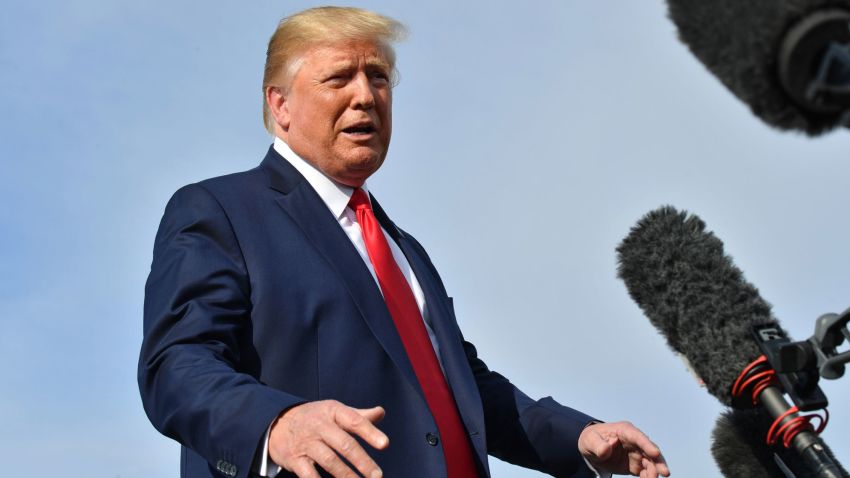Trump's Cuts To Disaster Relief: Heightened Risks During Tornado Season

Table of Contents
Reduced Funding for FEMA and its Impact on Tornado Response
The Trump administration's proposed and enacted budget cuts directly impacted the Federal Emergency Management Agency (FEMA), the primary federal agency responsible for disaster response and preparedness. These reductions in funding had far-reaching consequences for tornado response, affecting both pre- and post-disaster efforts.
-
Pre-Disaster Preparedness: Cuts to FEMA's budget significantly hampered pre-disaster preparedness initiatives. This resulted in:
- Reduced funding for advanced weather forecasting technology, limiting the accuracy and timeliness of tornado warnings.
- Fewer resources allocated to community education programs, hindering public awareness of tornado safety and preparedness measures.
- Slower response times due to reduced personnel and equipment, impacting the ability to effectively prepare communities before a tornado strikes.
-
Post-Disaster Relief: The aftermath of a tornado is equally challenging, and FEMA's reduced budget severely impacted the agency's ability to provide crucial support. Consequences included:
- Delayed distribution of vital aid, leaving affected individuals and families stranded without essential supplies.
- Insufficient temporary shelters, forcing survivors to seek refuge in inadequate or unsafe conditions.
- Limited access to grants and loans for rebuilding, hindering the long-term recovery of communities devastated by tornadoes.
Weakened Infrastructure and Increased Vulnerability to Tornadoes
Underfunded infrastructure directly contributes to increased vulnerability to tornadoes. The Trump administration's cuts to infrastructure spending had a cascading effect, leaving communities more susceptible to damage and loss of life.
- The deferred maintenance on critical infrastructure, including roads, bridges, and communication networks, hampered the ability to evacuate communities effectively and deliver aid promptly after a tornado.
- Lack of investment in storm shelters and improved early warning systems left many communities unprepared for the destructive force of tornadoes.
- The consequence was increased property damage and loss of life, as weaker buildings crumbled under the intense winds, and communities lacked the resources to effectively mitigate the impact of the storm.
Numerous rural communities, often lacking the resources to independently bolster their infrastructure, were disproportionately affected by this lack of investment, facing higher risks and slower recovery times.
The Political Ramifications and Public Outcry Following Tornado Events
The political debate surrounding disaster relief funding intensified following significant tornado events during the Trump administration. The inadequate preparedness and slow response times sparked public outrage and criticism.
- Public pressure mounted for increased funding for disaster relief, highlighting the crucial role of federal aid in protecting vulnerable communities.
- The administration's handling of disaster relief faced intense scrutiny, with critics pointing to the connection between budget cuts and the severity of the consequences.
- Calls for improved emergency planning and response became more frequent, emphasizing the need for proactive measures to mitigate the impact of future tornadoes.
Case Studies: Examining Specific Tornado Events Under the Trump Administration
Several significant tornado events during the Trump presidency demonstrated the impact of reduced disaster relief funding. For example, the [insert specific tornado event and location] resulted in [insert data on property damage and loss of life]. The delayed arrival of federal aid, hampered by budget constraints, exacerbated the suffering and prolonged the recovery process for affected communities. Similar analyses of other tornado events during this period would reveal consistent patterns of inadequate response due to funding limitations.
Conclusion: Understanding the Long-Term Consequences of Trump's Cuts to Disaster Relief on Tornado Season
The evidence clearly demonstrates a link between reduced disaster relief funding under the Trump administration and increased vulnerability during tornado season. These cuts negatively impacted preparedness, response, and recovery efforts, leading to greater property damage, loss of life, and prolonged suffering for affected communities. Adequate and sustained funding for disaster relief is not merely a budgetary matter; it's a matter of life and death. Investing in tornado preparedness, improving disaster response, and ensuring adequate disaster relief funding are crucial for mitigating the risks associated with tornadoes and other extreme weather events. We must learn from the past and advocate for policies that prioritize the safety and well-being of our communities. Let's work together to prevent future tragedies related to insufficient disaster relief and demand increased investment in protecting our nation from the destructive power of tornadoes.

Featured Posts
-
 Analysis How Trumps Budget Impacts Tornado Season Preparedness
Apr 25, 2025
Analysis How Trumps Budget Impacts Tornado Season Preparedness
Apr 25, 2025 -
 Trump Administration Cuts Heighten Tornado Season Dangers
Apr 25, 2025
Trump Administration Cuts Heighten Tornado Season Dangers
Apr 25, 2025 -
 Increased Tornado Risk During Trumps Presidency Experts Sound Alarm
Apr 25, 2025
Increased Tornado Risk During Trumps Presidency Experts Sound Alarm
Apr 25, 2025 -
 Herro And The Cavs All Star Weekend Winners
Apr 25, 2025
Herro And The Cavs All Star Weekend Winners
Apr 25, 2025 -
 Heats Tyler Herro Wins 3 Point Contest Cavs Duo Sweeps Skills Challenge
Apr 25, 2025
Heats Tyler Herro Wins 3 Point Contest Cavs Duo Sweeps Skills Challenge
Apr 25, 2025
